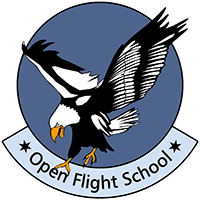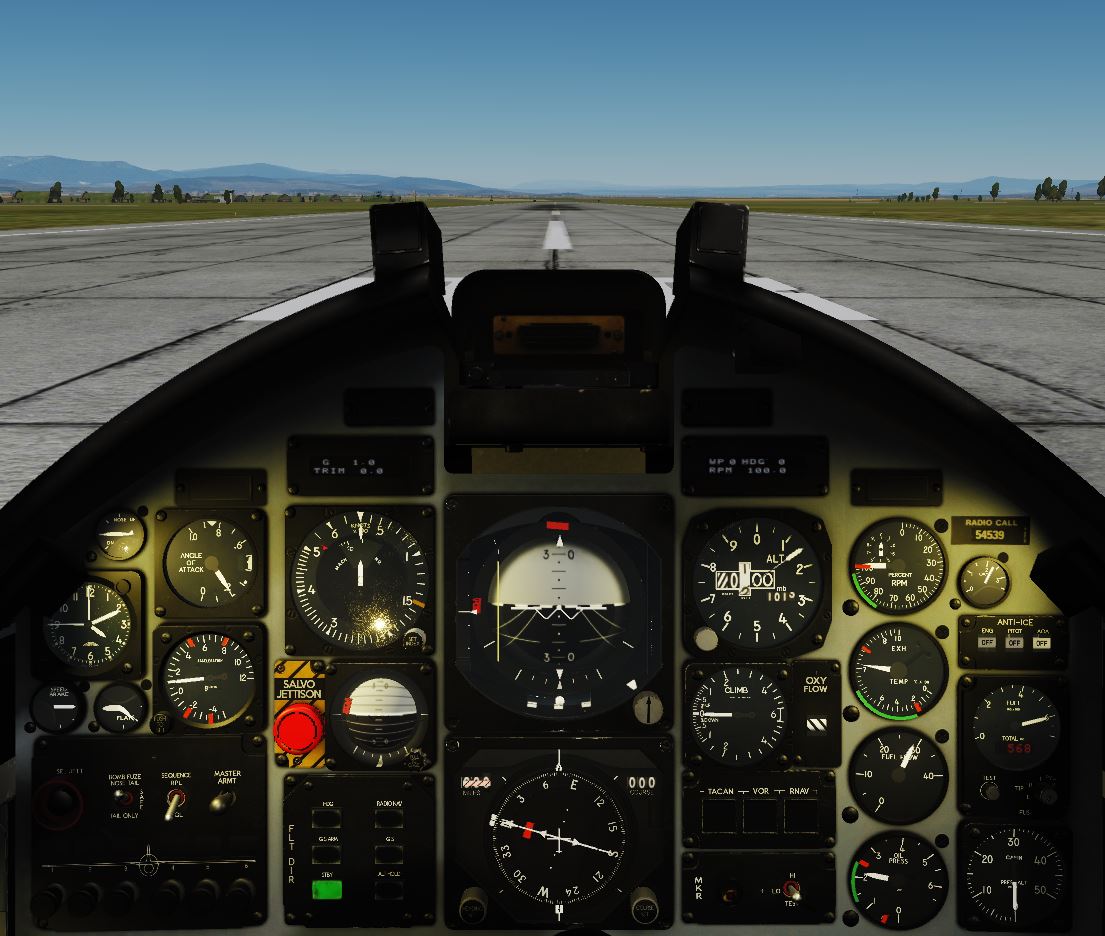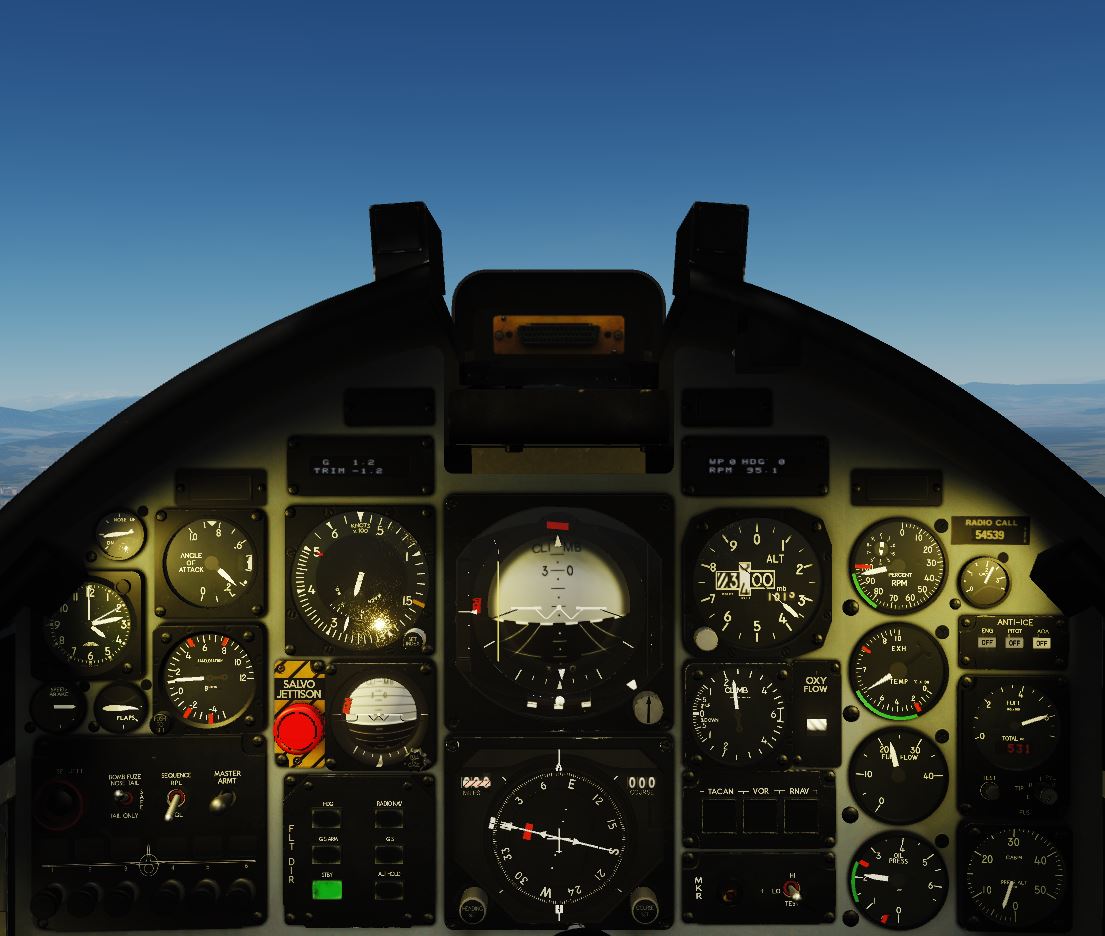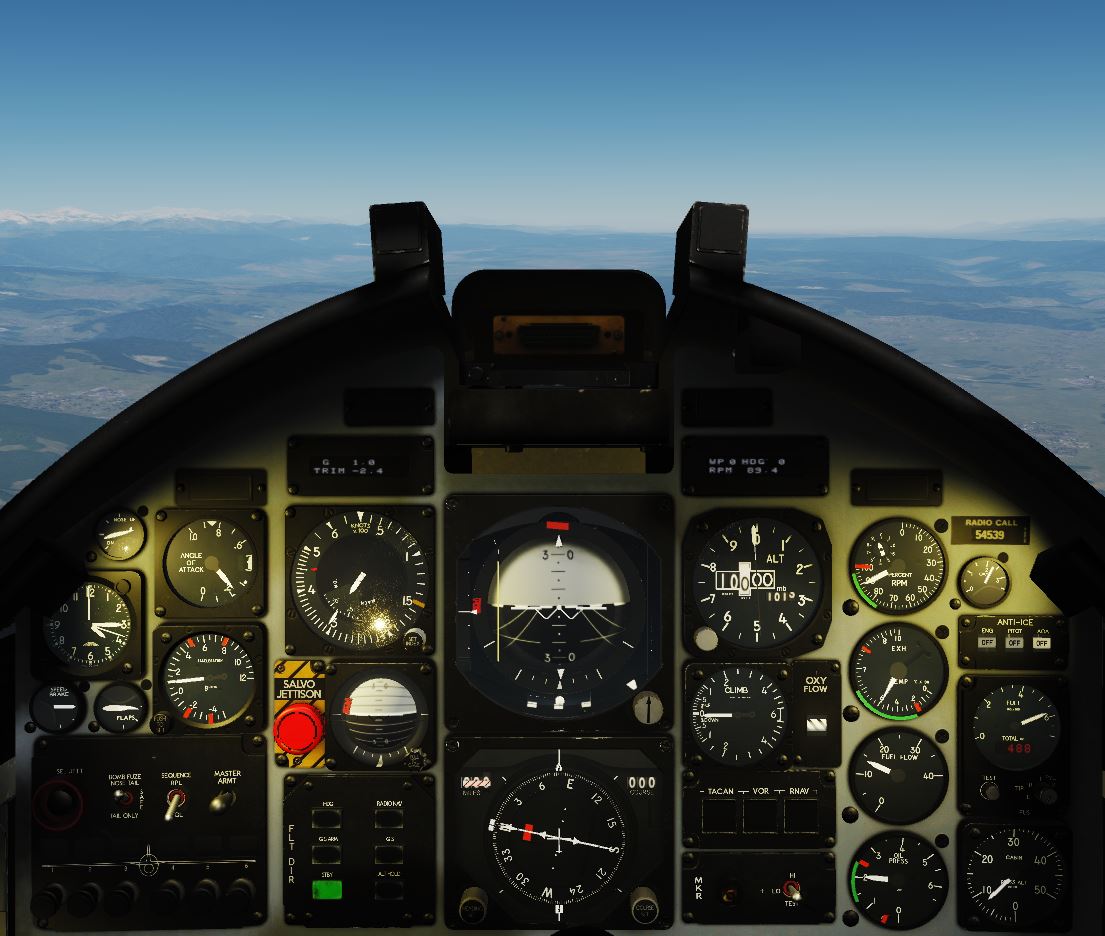Simplified Procedures in Detail
6. Normal Take-off and Climb
You can complete this activity with the 01 System Start or 02 Taxi mission. Then you have to follow the steps of the previous chapters.
Or you can start the training mission 03 Take-off and Free Flight. Here you are already on the runway and all systems are activated. This helps if you want to practice the launch several times in a row.
Or you can start the training mission 03 Take-off and Free Flight. Here you are already on the runway and all systems are activated. This helps if you want to practice the launch several times in a row.
At the end of the previous section we completed the Before Take-off Checks with:
- Give it a full power THROTTLE FULL HOTAS.
- Briefly check the engine instruments for any unusual values
The Take-off continues as follows:
- Turn off the nose wheel control NOSEWHEEL STEERING DISENGAGE HOTAS.
- Release the brakes. BRAKES RELEASE PEDALS.
- Initially, control the plane if necessary by carefully pressing the wheel brakes.
- From about 50 KIAS, the rudder becomes aerodynamically effective and you then hold the aircraft with side rudder inputs in the middle of the runway.
- At about 110 KIAS, pull the joystick back slightly until the nose of the aircraft rises.
The aircraft may accelerate a little further, depending on its weight, and then take off.
Do not rotate above 10° of elevation. About 7° nose up is good.
- Hold the nose of the aircraft at about 7-10 ° and ensure the aircraft has a positive climb rate.
- Select the Landing Gear up GEAR UP PRIOR 175 KIAS VLSP
The maximum speed with the landing gear extended is 175 KIAS.
- At 500 ft above ground and with over 120 KIAS airspeed, you are selecting the flaps FLAPS UP 120-175 KIAS LSC.
The maximum speed with extended flaps down is 175 KIAS.
- For the further climb, pull the thrust back slightly until the engine displays are all within their respective green areas.
- Turn off the landing lights LANDING LIGHTS OFF LSP.
- Speed up to 275 KIAS and continue climbing at the rate to maintain this speed.
- As soon as you reach your planned altitude, lightly push the joystick forward to go into level flight.
Check with the altimeter and VSI that you do not climb or sink and keep your altitude. Set the thrust to fly about 300 KIAS.
Up Next
In the next section you can get used to the flying behavior of the MB-339. Fly around and experiment with the flight characteristics.




